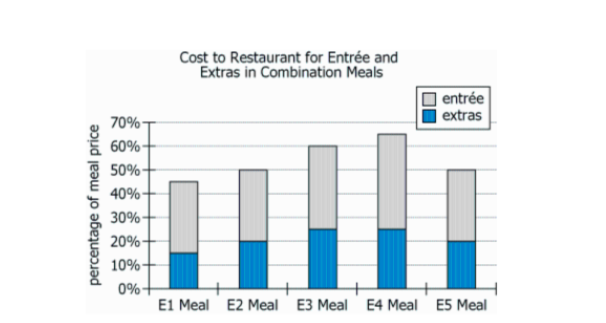Events & Promotions
|
|

GMAT Club Daily Prep
Thank you for using the timer - this advanced tool can estimate your performance and suggest more practice questions. We have subscribed you to Daily Prep Questions via email.
Customized
for You
Track
Your Progress
Practice
Pays
Not interested in getting valuable practice questions and articles delivered to your email? No problem, unsubscribe here.
- Nov 20
07:30 AM PST
-08:30 AM PST
Learn what truly sets the UC Riverside MBA apart and how it helps in your professional growth - Nov 22
11:00 AM IST
-01:00 PM IST
Do RC/MSR passages scare you? e-GMAT is conducting a masterclass to help you learn – Learn effective reading strategies Tackle difficult RC & MSR with confidence Excel in timed test environment - Nov 23
11:00 AM IST
-01:00 PM IST
Attend this free GMAT Algebra Webinar and learn how to master the most challenging Inequalities and Absolute Value problems with ease. - Nov 25
10:00 AM EST
-11:00 AM EST
Prefer video-based learning? The Target Test Prep OnDemand course is a one-of-a-kind video masterclass featuring 400 hours of lecture-style teaching by Scott Woodbury-Stewart, founder of Target Test Prep and one of the most accomplished GMAT instructors.
Kudos
Bookmarks
Dropdown 1: E1
Dropdown 2: E4
Be sure to select an answer first to save it in the Error Log before revealing the correct answer (OA)!
Difficulty:
 95%
(hard)
95%
(hard)
Question Stats:
63% (02:50) correct 37%
(02:57)
wrong
37%
(02:57)
wrong  based on 998
sessions
based on 998
sessions
History
Date
Time
Result
Not Attempted Yet

A certain restaurant serves exactly 5 entrées—E1 through E5. Customers may order an entrée alone, but most customers order an entrée as part of a combination meal, which consists of one entrée plus extras—a side dish and drink. While the entrées vary in cost to the restaurant, the extras always have the same cost to the restaurant. The graph shows the actual cost to the restaurant for the entrée and the extras as a percent of the price charged for the meal.
Based on the information provided, select from each drop-down menu the option that creates the most accurate statement.
Of the five combination meals, the meal with entrée has the highest price.
Of the five combination meals, the sale of a single meal with entrée nets the least profit.

A certain restaurant serves exactly 5 entrées—E1 through E5. Customers may order an entrée alone, but most customers order an entrée as part of a combination meal, which consists of one entrée plus extras—a side dish and drink. While the entrées vary in cost to the restaurant, the extras always have the same cost to the restaurant. The graph shows the actual cost to the restaurant for the entrée and the extras as a percent of the price charged for the meal.
Based on the information provided, select from each drop-down menu the option that creates the most accurate statement.
Of the five combination meals, the meal with entrée has the highest price.
Of the five combination meals, the sale of a single meal with entrée nets the least profit.
ID: 101121
ShowHide Answer
Official Answer
Dropdown 1: E1
Dropdown 2: E4
Kudos
Bookmarks
guddo
We are shown the cost to a restaurant as a percentage of meal price.
So if a meal price is $30, and cost to the restaurant for that meal is 70%, the cost to the restaurant for that meal will be $21 and the restaurant will make $9 profit on that meal. The $21 cost will be a sum of cost of entree (say $11) and a fixed cost of sides of $10.
Cost to restaurant of entrees are different but cost of 'extras' are always same (say $10 for all meal combinations). So assuming meal prices of combinations are E1, E2, E3, E4 and E5,
We know that 15% of E1 = 20% of E2 = 25% of E3 = 25% of E4 = 20% of E5 = Constant (price of extras i.e. $10)
Hence, E1 is highest. (because its 15% is equal to higher percentage of others)
Of the five combination meals, the meal with entrée ___ has the highest price.
ANSWER: E1
Of the five combination meals, the sale of a single meal with entrée ___ nets the least profit.
The least profit will be made by a meal with the smallest price and maximum cost. E3 and E4 have the same combination meal price since cost of sides is 25% of the price in both. But cost of entree is higher in E4. It is 40% of meal price. Hence profit in E4 will be lowest.
ANSWER: E4
The question is an application of percentages: https://youtu.be/HxnsYI1Rws8
Kudos
Bookmarks
E1, E4
(1) since cost of extras is fix let it be "E". now total cost of meal become
P% (in blue bar)*T (total meal cost) = E
T=E/P. Hence we need to minimize P to make meal costliest hence answer is E1
(2) Highest bar will have highest cost and remaining will be profit. Hence least for E4
(1) since cost of extras is fix let it be "E". now total cost of meal become
P% (in blue bar)*T (total meal cost) = E
T=E/P. Hence we need to minimize P to make meal costliest hence answer is E1
(2) Highest bar will have highest cost and remaining will be profit. Hence least for E4











